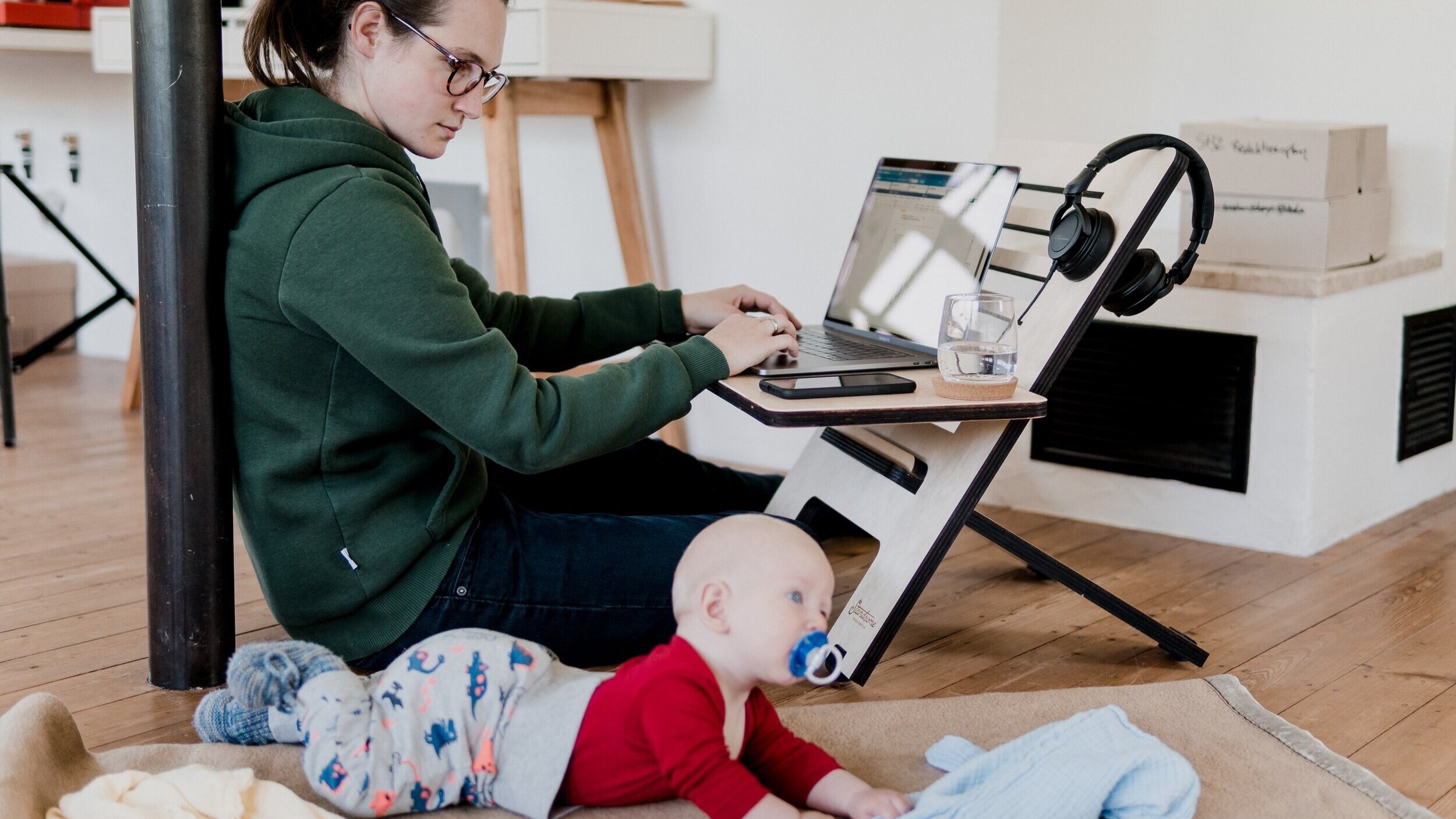The Covid-19 crisis plunged most of the world into a major economic downturn - and unlike ‘regular’ recessions, which impact men’s employment more than women’s, the employment drop due to social distancing measures has had a larger impact on sectors with a high percentage of female employees.
According to the U.S. Bureau of Labor Statistics, there were 2.2 million fewer women in employment in October 2020 than in October 2019. And between August and September, 865,000 women dropped out of the US labor force - compared to just 216,000 men during the same period.
→Download Now: The Ultimate Guide to Reboarding your Workforce post-Covid [Free eBook]
“There’s no historic parallel for what’s happening here for women,” says Nicole Mason, the president and CEO of the Institute for Women’s Policy Research. “We have nothing to compare it to: not to the 2008 recession or the Great Depression.”
The impact of Covid-19 on women
Nearly half of all working women in the US - 46% or 28 million - work in jobs paying low wages, with median earnings of only $10.93 per hour. Because of their concentration in lower-wage face-to-face jobs, covid-19 has hit women especially hard.
While many higher wage jobs can be more easily shifted to home working, this is not the case for the majority customer-facing jobs, such as retail sales and hospitality. Resultantly, the unemployment rate for women jumped by more than 12 percentage points between February and April in the US - in contrast, the rate for men increased by less than 10 percentage points.
School closures
The closure of schools meant a higher proportion of working mothers had to leave the workforce, in order to keep up with increasing child care demands.
Single parent families, which make up 17% of all US households, have been particularly hard hit, and there are more than 8.5 million more single mothers than single fathers in the United States today. In all households with children under the age of 18, two parent households make up 70%, 21% are mother only households, and only 4% are father only.
Gender based division of labor
There’s also an uneven split when it comes to time spent on caring for children. Among all married couples with children, husbands provide 7.4 hours of childcare per week on average, whereas the wives provide 13.3 hours - a 5.9 hour discrepancy.
The extra demand on childcare has undoubtedly disproportionately affected women - indeed, according to a recent survey, one out of four women who lost their job during the pandemic said this was down to a lack of childcare.

With the roll-out of the vaccine and school’s reopening, the world is slowly ramping up for a return to normality.
So how do you encourage women back into your workforce, and make sure they’re set up for success?
What is reboarding training?
Reboarding is the training required to reintroduce employees into the workplace after a period of absence.
Historically, it’s been used in relation to sick leave, parental leave and secondments. But now, ‘reboarding’ has become universally relevant as furloughed and laid off employees are brought back to workplaces after a year (or more) out of practice.
→ Download Now: Back to Work Employee Reboarding Checklist [Free Template]
What steps can we take to ease women’s anxiety about returning to work, and aid them in a smooth and successful return to work?
1. Practice empathy
The most important thing is to be empathetic to the women returning to your workforce, and acknowledge the unusual situation we find ourselves right now, even as things slowly begin to return to normal.
Showing empathy has a huge impact on employee productivity and loyalty - 77% of employees would be willing to work longer hours for an empathetic employer, and 90% said employers who recognize the importance of mental health were more likely to retain them.
It’s important to understand that women may have childcare and family responsibilities outside of the workplace - try and put yourself in their shoes, and acknowledge their personal situation.
2. Be flexible
Be as flexible as you possibly can. Is it possible to change shift patterns for those that have children at home? Can you introduce split-shifts for those that want them? Can some of your team work part-time whilst they’re juggling their career & home responsibilities?

“Moving forward, companies will not want to risk losing women and will implement procedures and support initiatives to avoid the pitfalls of another crisis situation,” predicts Michelle Keefe, from MomUp. “Companies will also recognize that flexibility and remote work is productive and effective now that systems are in place to allow for it, and there will be a more progressive attitude to it.”
Flexibility is one of the key pillars in IBM’s highly successful Tech Re-Entry program to ‘Bring Her Back’ - a paid returnship program that helped technical professionals who took a break from the workforce and are looking to restart their careers. It prides itself on offering “flexibility and ease of transition from your break to getting back to the workforce”.
3. Provide continuous learning
Learning is a lifelong journey and when facilitated by an employer, vastly improves employee loyalty. Businesses with strong learning cultures enjoy employee engagement and retention rates 30-50% higher than those without one.
To excel, create and distribute lessons to educate and train your entire workforce regularly. Covid-19 related learning would largely revolve around safety and customer service - shift patterns, changed procedures, workplace navigation, PPE, customer interaction and sanitation measures.
But continuous learning stretches beyond employees’ immediate needs - it’s a constant and can be around general skills development, performance-based (e.g. when an employee is underperforming), or a time/event-specific event (e.g. you are launching a new product).
By ensuring all employees are trained up to the same level by consistent provision of relevant learning, you create an agile, cross-functional team that can work flexibly around each other and share important tasks.
This means there is more than one qualified person able to cover for another at all times, should a childcare or family emergency arise.
4. Widen your employer-family support
Is your paid leave for parents sufficient? How long is it? Who is entitled to it? Look to destigmatize the need to take time off work to attend to family affairs. In addition, consider implementing forms of ‘direct care’ - installing a crèche or offering onsite childcare in your workplace.
If this is not possible, widen the financial support available through provision of vouchers for childcare, or discounts at local daycare centers.

Always lead by example - when senior leaders and C-Suite practice what your employee handbook preaches, it normalizes these values within your workplace culture.
If mothers and fathers are accommodated for in equal measure, with child responsibilities fully considered by employers, women - who shoulder the majority of childcare - will naturally be empowered to successfully re-enter the workforce.
5. Check in regularly with employees
Once you’ve started to reboard your workforce, make sure you’re checking in regularly. Check in both on mental wellbeing and training needs - strike a balance between questions about what would make them feel better supported and questions that reveal knowledge gaps.
Some women may have been out of work for a while, or may have taken an extended career break - perhaps they may need refresher training, or would like to take on some additional learning.
Continue to send out a short pulse survey to gather sentiment and gain insight. This will illuminate your ‘blind spots’ in terms of best supporting the women in your workforce return to work. This has the added benefit of improved employer-employee relations - those who feel heard are 4.6 times more likely to perform at their very best.
-
Related: What is a ‘pulse survey’?
How to reach remote employees with reboarding training
Your efforts to support reintegration will be undermined if the information you are attempting to distribute isn’t able to reach employees easily.
To execute reboarding successfully, you’ll need to first have the right remote learning tool on your side. A good mobile learning solution is one that enables you to inform, engage and upskill employees in a way that’s:
-
Accessible. Today, accessible means mobile - we carry them everywhere we go. In fact, Pew Research found just 1% of Americans never have their phone with them.
-
To the point. The average attention span has decreased since 2000. To hold employees’ attention, deliver engaging information in short, concise bursts. This is known as ‘microlearning’.
Reintegrating women into the workplace post pandemic
With Covid-19 threatening to set back decades of progress on gender equality, it’s more important than ever to support women, and offer training and resources to ensure they aren’t just operational, but able to perform to the best of their ability upon their return to work. When every employee can be perform at their best, your business performs optimally as a whole.






